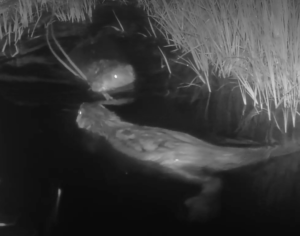Beaver Habitat Planting at Collier Memorial State Park
Beaver Habitat Planting at Collier Memorial State Park
In Spring 2023, Beaver Works Oregon began a beaver habitat planting project at Collier Memorial State Park on the banks of the Williamson River and its Spring Creek Tributary. The area used to be plentiful with beaver and wildlife habitat prior to a large wildfire that burned much of the area almost four years ago.
Fortunately, signs of wildlife activity are beginning to revive, and rangers have spotted several signs of beaver activity, despite no lodges or dams present. It’s likely that beaver are passing through the area but aren’t sticking around due to the absence of forage and woody structure from the burn.
To restore riparian habitat and improve local conditions for beaver repopulation, we have planted over 2,650 willow and cottonwood sticks in 2023 and 2024, establishing 9 exclosures throughout the Park. Over the next 3-5 years, these sticks will grow into willow and cottonwood plants that will provide long-term forage and habitat elements for beavers as well as a huge array of other wildlife.
There is also a Photo Chronolog post installed at the park near one of the project sites for park visitors to take photos and upload them to an online database for monitoring through citizen science.

Engaging Oregonians in Local Wildlife Habitat Planting
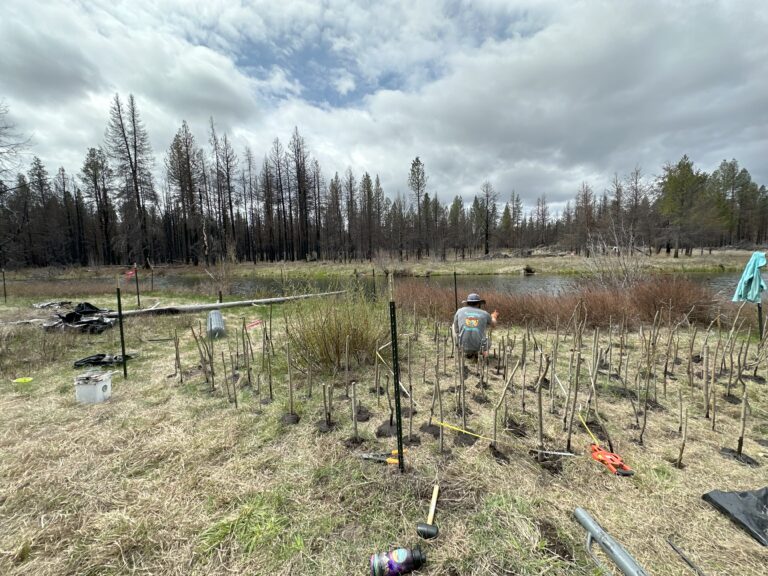
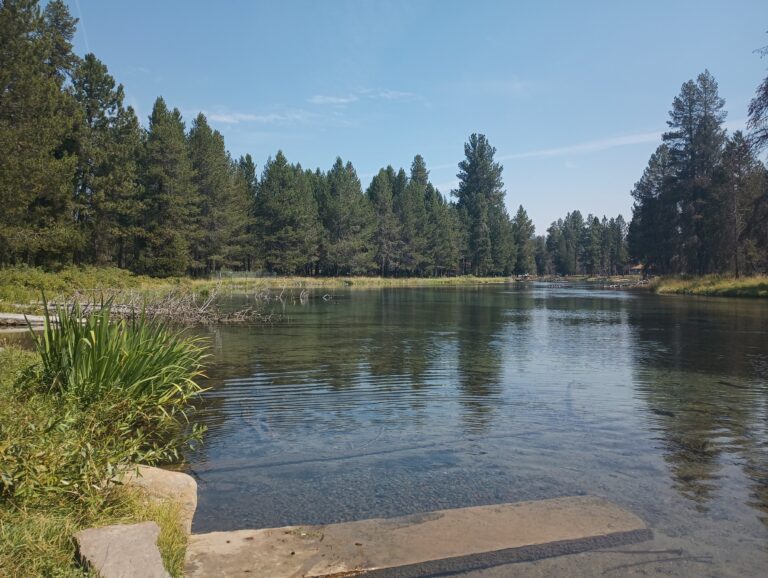
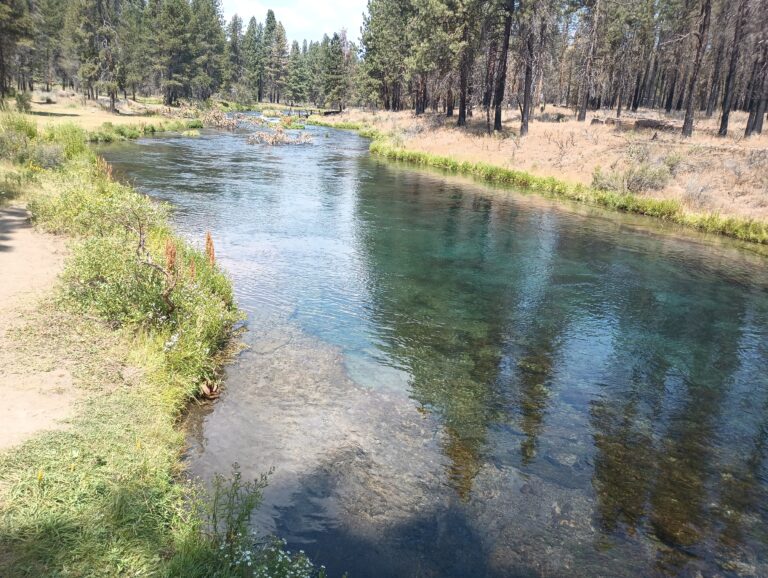


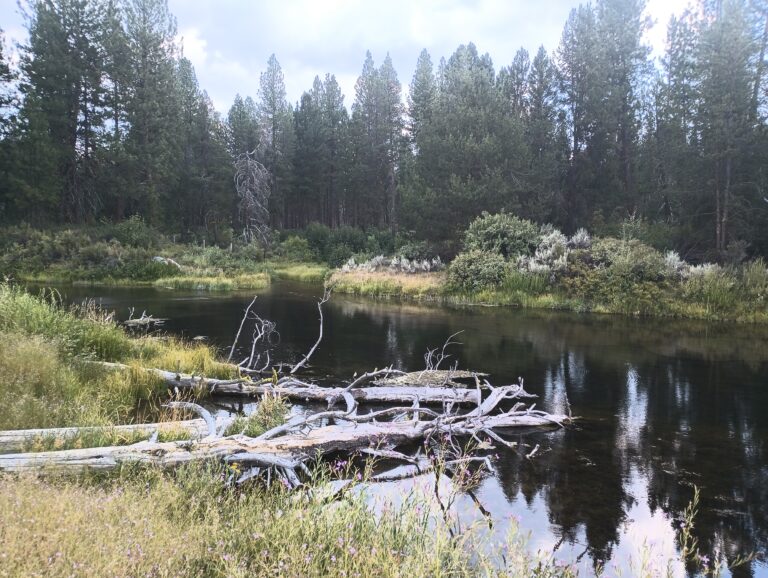
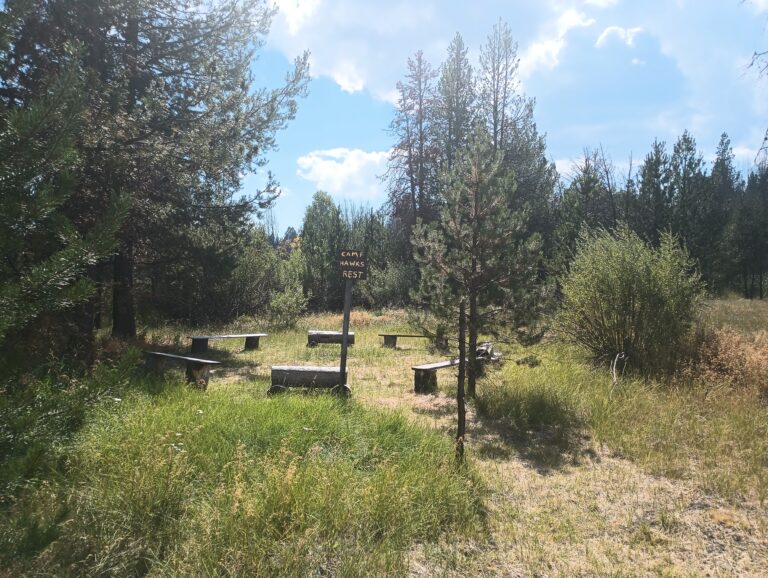
Main Objectives of Our Program at Collier
By taking action to restore the health of the Williamson River and Spring Creek, we are positively impacting an Oregon Conservation Strategy (OCS) Habitat. Flowing water and associated riparian habitat listed as a priority issue for the East Cascades ecoregion, and crucial to the survival of many OCS bird, amphibian, fish, mammal, and invertebrate species. The Upper Klamath Watershed OCS Conservation Opportunity Area (COA 138) is downstream of our project site. Upstream improvements are an essential aspect of watershed scale and riparian habitat restoration. Our plan addresses the majority of the recommended conservation actions outlined in the OCS for this COA.
With COAs covering only 34% of Oregon’s land area, restoration outside of (but with direct influence on) those critical areas is a pivotal way to increase habitat connectivity for priority species, one of the OCS aims. Our work with the public on public lands often leads to projects on adjacent private lands, further extending the benefits throughout the watershed and broadening the community of invested stakeholders.
Below is a map of Collier Memorial State Park with installed native plant exclosures marked. Attached to each marker are associated pictures that are updated with each progress check, allowing us and volunteers to see the plant growth and wildlife activity.
Project Re-Wild Trip Reports



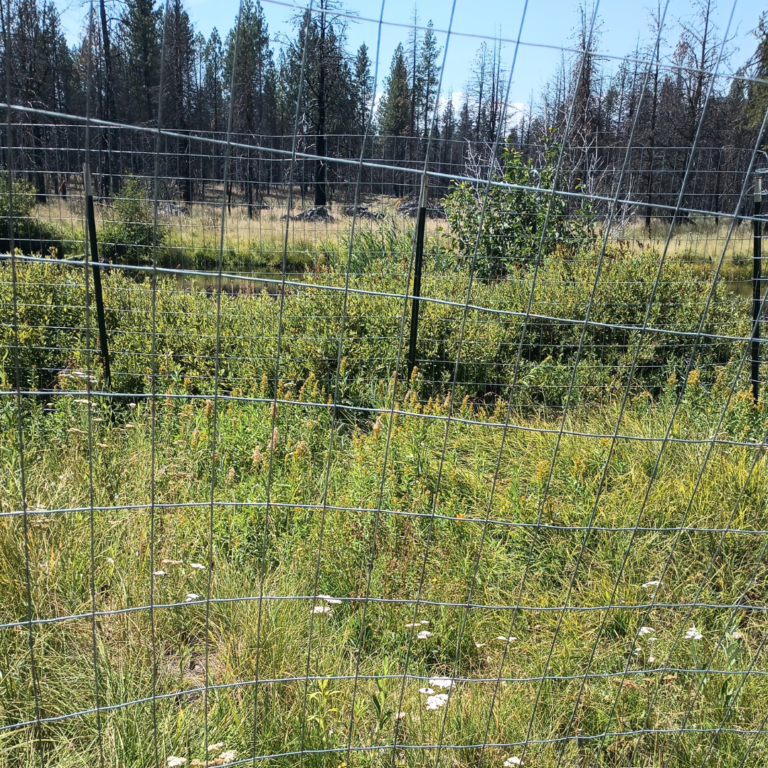



In November of 2023, Beaver Works staff returned to Collier Memorial State Park last week to monitor planting success and check trail cameras at our different sites along Spring Creek and the Williamson River. Plant growth varied, but many of our new willow sticks showed promising signs of desired growth. We spotted lots of wildlife on the trail cameras, including ducks and other waterfowl, deer, and foxes. A ranger also reported increased beaver activity near the junction of the two waterways - a promising sign that adding food sources for these beavers will help support their success along these stretches of river.
We look forward to hosting more volunteer and educational events at this site. If you would like to get involved in seasonal monitoring – reach out! We would love to have a dedicated steward tracking our plant growth and trail camera footage at Collier Memorial State Park. conservation issues facing the East Cascades ecoregion (habitat loss due to recreational overuse).
In June and August of 2023, Think Wild’s Beaver Works team went out and conducted a site monitoring check on the six planting sites at Collier State Park last week. They found all of the enclosures to be in great condition with no foraging or disturbance. Willow and cottonwood survival averages were above 70% across all sites, with three sites over 80% survival!
We also added interpretive signs at each of the cage/protection locations so that the public could gain a deeper understanding on the reasons for the plantings and caging, and the nature of beaver behavior as beneficial to the riverine landscape.
While the trail camera footage was downloading, we assessed the survival, growth, and mortality of the 112 cottonwood, willow, and dogwood sticks that had been planted within enclosures in May 2023.
The spring plantings are leafing out, but competing against forbs and grass (see photos below). The creation of the exclosure has condensed foot traffic closer to the bank. Our camera trap monitoring revealed a beaver visiting the exclosure, within days of planting, to harvest Willow. So our Spring Creek site has already demonstrated its utility to beaver as a food source. The importance of healthy bank habitat is underscored by the fire on private land, in transitional ownership, across the bank from our Williamson River site.
After weeding and assessing survival and growth, we got a tour of sites with potential from park rangers, and identified two additional sites along the Williamson River with potential for uplift.
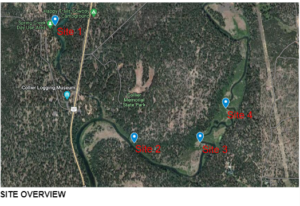
Overall, this site has enormous potential to serve as a model for historic and natural resource preservation. It is a multi-use area with a long history and much to offer people and wildlife. According to the Oregon Conservation Strategy, increasing demands for year-round recreational activity in this region has the potential to negatively impact wildlife habitat. However, funding projects like this create an opportunity for habitat improvements paired with positively impactful recreation. Restoration engaging volunteers within Collier Memorial State Park leverages change at the crux of one of the major conservation issues facing the East Cascades ecoregion (habitat loss due to recreational overuse).
Beaver Works Oregon partnered with Oregon Department if Parks and Recreation for on-site implementation of planting of native vegetation “starts” to be enclosed with beaver exclusion fencing within the 6 acre area referenced in the map below.
Scope of Project
Within the property boundaries – Think Wild’s Beaver Works identified 4 sites along the Deschutes River bank to cluster plants of up to 200 unrooted cuttings of cottonwood, willow and dogwood - all starts native to Central Oregon. Height growth of cottonwood often exceeds 5 ft per year for at least 10 years, and trees may reach diameters of 6 to 8 in. in that time.
Plantings were protected from beaver and ungulate browse by 5 ft high wire fencing of 2”x4” mesh, in groupings of 25 - 50 sticks per exclosure.
Beaver Works staff went out to Collier State Park for a site visit. The area used to be plentiful with beaver and wildlife habitat prior to a large wildfire that burned much of the area almost three years ago. Fast forward to yesterday, signs of wildlife activity are beginning to revive, and we spotted several signs of beaver activity (pictured here), despite no lodges or dams present. It’s likely that beaver are passing through the area but aren’t sticking around due to the absence of forage and woody structure from the burn.
Within the property boundaries – Think Wild’s team has identified 2 large planting sites which would include multiple exclosures along the banks of the Williamson River and 1 smaller experimental site on Spring Creek. The identified sites will be planted with around 900-1,200 unrooted cuttings of native cottonwood and willow. Plantings will be protected from beaver and ungulate browse by 5 ft high wire fencing of 2”x4” wire mesh, in groupings of 75-200 sticks per exclosure. This fencing should remain in place for a period of three to five years, the approximate time it takes for vegetation to establish and be robust enough to withstand browse pressure from wildlife.
::insert picture of chewed conifer from Instagram::
With support from OPRD staff, Think Wild will conduct planting, fence maintenance and monitoring post-project implementation through scheduled site visits and photo-monitoring. We are also interested in exploring the possibility of conducting a future project on the south side of the Williamson River to promote habitat and resource connectivity.


